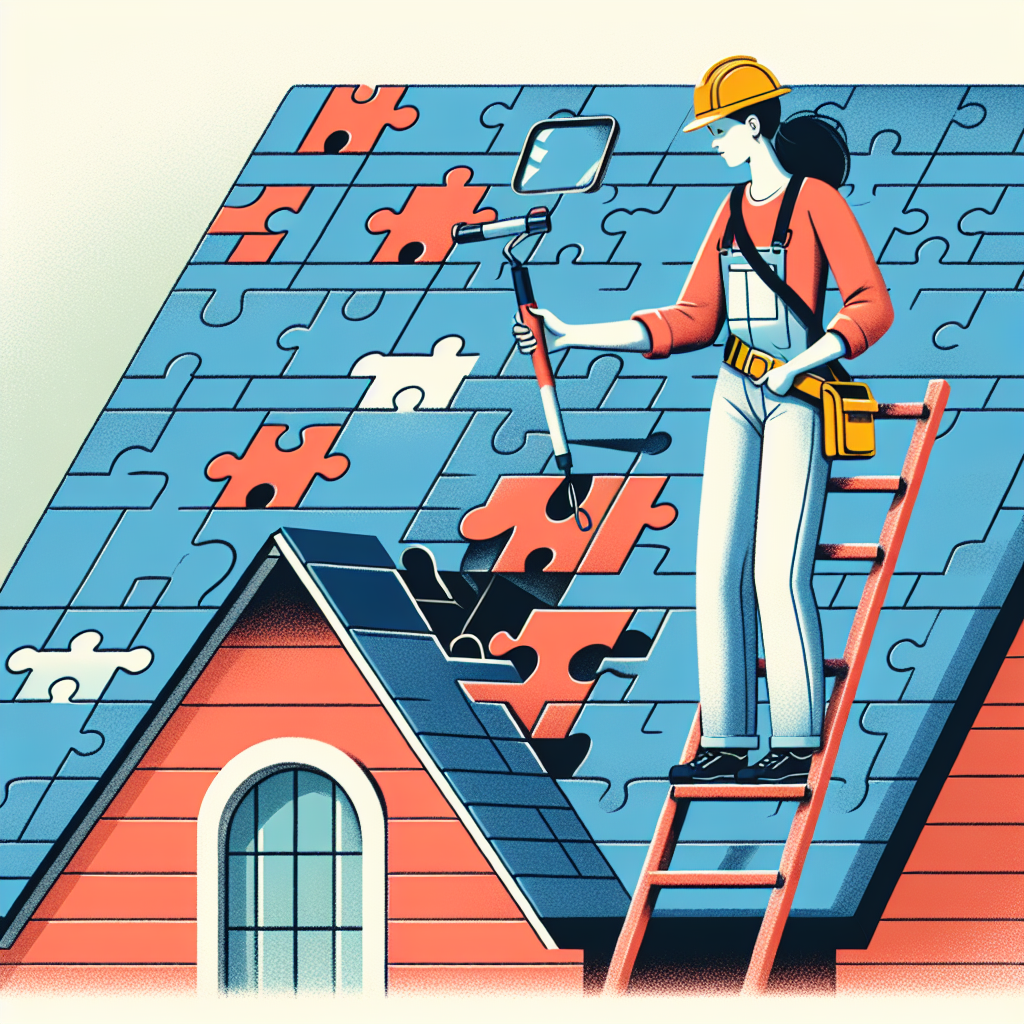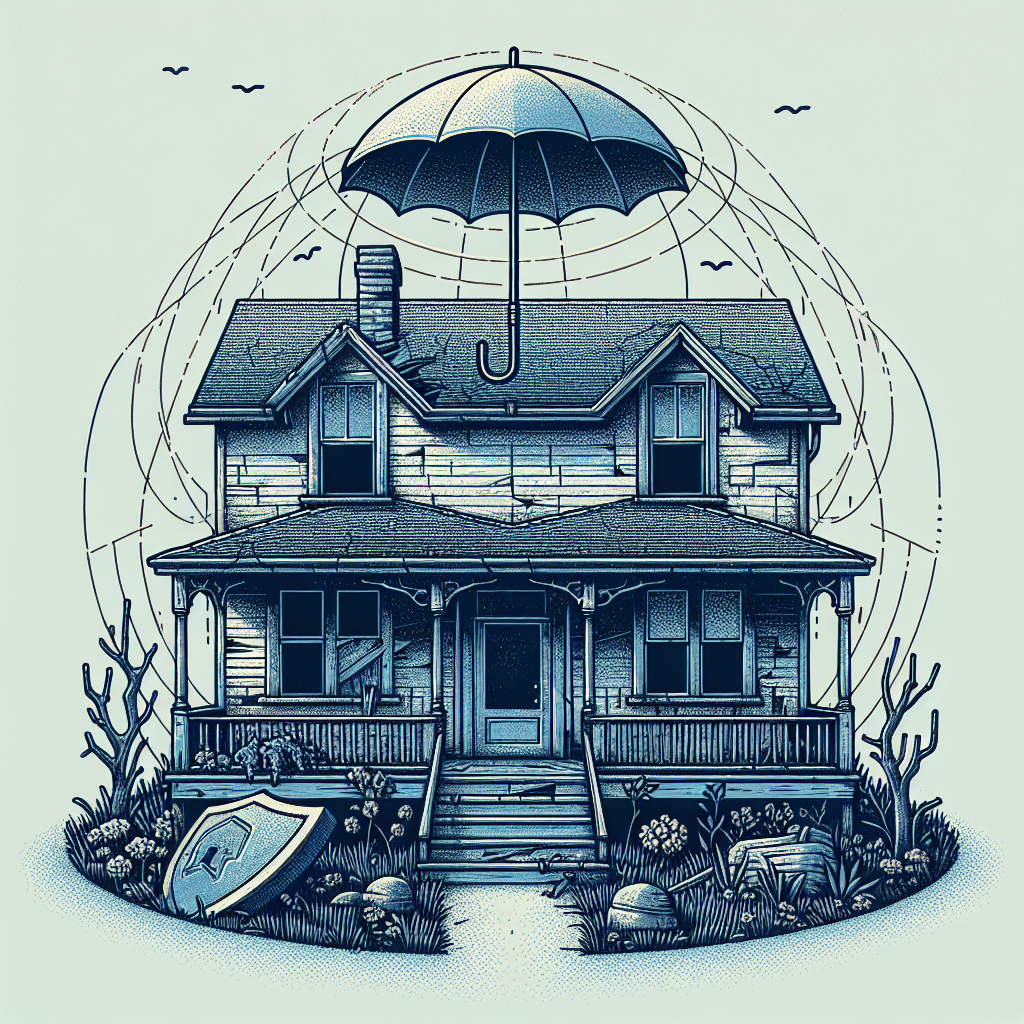Filed under Home Insurance on
GEICO Home Insurance Roof Coverage Explained

Your roof protects everything beneath it, yet it’s also the part of your home most exposed to wind, hail, and harsh sun. That is why understanding GEICO Home Insurance Roof Coverage is more than a policy detail—it is a plan for resilience. In this guide, you will learn how coverage generally works, which types of roof damage are usually covered or excluded, how deductibles and roof age impact payout, and the practical steps to take before and after a storm. While homeowners policies through GEICO are written by partner insurers, the principles below reflect how most modern homeowners policies treat roofs. Always review your specific policy forms and talk with a licensed agent about state and carrier variations.
How Homeowners Insurance Treats Your Roof
Homeowners insurance is designed to repair or replace your roof when it suffers sudden and accidental damage from a covered peril. Your dwelling coverage typically includes the roof, subject to policy terms, deductibles, and any roof-specific endorsements. Policies provided through GEICO Insurance Agency are underwritten by partner insurers, which means forms and endorsements can vary by state and carrier. Nevertheless, the framework below will help you interpret what GEICO Home Insurance Roof Coverage generally means in practice.
Open Perils vs. Named Perils
Most standard HO-3 policies provide open-perils coverage on the dwelling, meaning your roof is covered for all direct physical loss unless excluded. HO-5 forms also offer open-perils dwelling coverage, sometimes with broader personal property protection. Condo and renters policies handle roofs differently because building exteriors are usually the association’s responsibility. If you own a condo, check your HO-6 and the association’s master policy to understand who covers roof damage.
What Roof Damage Is Typically Covered
Insurance responds to sudden, accidental damage, not wear and tear. Under GEICO Home Insurance Roof Coverage, sudden and accidental damage from the following perils is generally included, subject to your policy terms:
- Windstorms and hail that crack shingles, crease asphalt tabs, dent metal panels, or rip off roofing material
- Fire and smoke that char or otherwise damage roof decking and coverings
- Lightning strikes that directly impact the roof structure or cause power-surge damage resulting in roof-related fires
- Falling objects such as tree limbs broken by wind or ice
- Weight of ice and snow leading to roof collapse or forceful water intrusions
- Vandalism that damages the roof surface
Each claim scenario hinges on cause and condition. For instance, if hail compromises shingles and results in interior water damage, the hail damage to the roof and resulting water intrusion are typically covered. If water entered due to pre-existing wear, coverage can be limited or denied.
What Is Usually Not Covered
Equally important is understanding what GEICO Home Insurance Roof Coverage does not include. Most homeowners policies exclude:
- Wear and tear, deterioration, or roofs at or beyond their expected life
- Gradual leaks or seepage occurring over weeks or months
- Rot, mold, fungus, and infestations unless directly caused by a covered peril
- Faulty installation or defective materials, including poor flashing or inadequate ventilation
- Cosmetic-only damage (e.g., minor cosmetic dents or marring to metal roofs if functionality is not impaired, where excluded by endorsement)
- Earth movement and flooding from rising water, which require separate policies or endorsements
Insurers across the industry have increasingly adopted roof-surfacing limitations, especially in hail- and wind-prone regions. It is common to see endorsements limiting older roofs to actual cash value settlements or excluding purely cosmetic hail dents on metal panels.
Deductibles and Special Wind or Hail Deductibles
Deductibles are the part of a claim you pay first, and they significantly shape your out-of-pocket cost. Here is how deductibles can affect GEICO Home Insurance Roof Coverage:
- All-perils deductible: A flat amount, such as 1,000 dollars or 2,500 dollars, applies to most covered losses.
- Wind/hail or hurricane deductible: In coastal or high-risk areas, a separate percentage deductible (e.g., 1 to 5 percent of Coverage A) may apply to wind, hail, named storm, or hurricane claims.
- Roof-specific deductible: Some carriers add an extra deductible for roof-surfacing losses, especially in hail belts.
Check your declarations page to see whether a separate wind/hail or named-storm deductible applies. A 2 percent deductible on a 350,000 dollars dwelling limit equals 7,000 dollars out of pocket for that peril category.
Replacement Cost vs. Actual Cash Value for Roofs
How your roof is valued matters as much as whether the loss is covered. Many policies connected to GEICO Home Insurance Roof Coverage include Replacement Cost Value (RCV) on the dwelling, but roof-specific endorsements may switch older roof surfaces to Actual Cash Value (ACV). Here is the difference:
- Replacement Cost Value (RCV): Pays the cost to repair or replace with similar materials without deducting for depreciation. Insurers often pay ACV upfront, then release withheld depreciation after work is completed.
- Actual Cash Value (ACV): Pays the replacement cost minus depreciation for age and condition. Older roofs can see significant depreciation deductions.
Example: A new roof costs 16,000 dollars. If it is 12 years into a 30-year shingle life, depreciation could be roughly 40 percent, making ACV about 9,600 dollars before your deductible. Under RCV, you would recover the depreciation after repairs, subject to policy terms and proof of completion.
Age, Material, and Eligibility Rules
Roof age and material influence both eligibility and pricing. Common industry practices include:
- Age thresholds: Carriers may restrict or surcharge roofs over 15 to 20 years, require inspection, or limit settlement to ACV for older roof surfaces.
- Material matters: Impact-resistant (IR) shingles, Class 4-rated products, and certain metal roofs can earn premium credits in many states.
- High-risk materials: Wood shake and certain tile types can be subject to stricter underwriting or higher deductibles.
- Documentation: Insurers may ask for roof photos, receipts, or inspection reports. Drone or third-party inspections are increasingly common.
The Insurance Institute for Business & Home Safety has documented performance gains with upgraded systems, and its FORTIFIED Roof standard is being adopted in storm-prone communities. Asking your agent about impact-resistant materials and credits can cut premiums and reduce claim frequency.
Ordinance or Law Coverage for Code Upgrades
Building codes change over time, and a replacement roof may require upgrades such as drip edges, improved ventilation, or a secondary water barrier. Ordinance or law coverage helps pay for these code-driven costs when a covered loss triggers repairs. Common limits are 10 percent of dwelling coverage, though 25 or 50 percent options are often available. If your home is older or your municipality has strict codes, consider increasing this limit.
Cosmetic Damage vs. Functional Damage
Not all hail dents or surface marks reduce a roof’s ability to shed water. Many carriers exclude purely cosmetic damage to metal panels or other roof surfaces. Functional damage—like hail strikes that fracture shingle mats, puncture membranes, or impair water-shedding—remains more clearly insurable. If your policy has a cosmetic-damage exclusion endorsement, your adjuster will evaluate whether the hail compromised performance or merely altered appearance.
Storm Trends and What They Mean for Roof Coverage
Hail and severe convective storms have driven elevated insured losses in recent years, according to industry reporting from organizations such as the Insurance Information Institute and Verisk. Several carriers have responded by introducing percentage deductibles, cosmetic-damage exclusions, and ACV-only roof endorsements in high-loss areas. For homeowners, the takeaway is twofold: invest in a more resilient roof to reduce loss potential, and read your policy to understand which limitations apply before a storm hits.
Step-by-Step: Filing a Roof Claim
When wind or hail hits, taking the right steps can safeguard your coverage and speed resolution. To make GEICO Home Insurance Roof Coverage work for you, follow this practical sequence:
- Ensure safety first. Do not climb a damaged roof. If interior water is entering, move belongings and place buckets or tarps safely.
- Mitigate further damage. Temporary tarping or emergency dry-out is usually covered, subject to the deductible. Keep receipts.
- Document everything. Photograph shingles, gutters, downspouts, siding, and interior staining. Date-stamped images and short videos help.
- Report the claim promptly. Timely notice satisfies policy duties and helps align weather data with your loss date.
- Meet the adjuster. Share evidence and point out all impacted slopes and interior areas. If you have a contractor’s estimate, provide it.
- Review the estimate. Understand line items such as removal, underlayment, flashing, ventilation, drip edges, and code upgrades.
- Understand depreciation. If your policy includes RCV, you may receive an initial ACV payment and a depreciation holdback payable after work is completed.
- Select a reputable contractor. You are free to choose; verify licensing, insurance, references, and warranties. Be cautious with assignments of benefits or door-to-door pressure.
- Complete repairs and submit proof. Invoices and photos usually suffice to release recoverable depreciation, if applicable.
- Track supplements. Unforeseen issues (like hidden decking rot) discovered during construction often require a supplemental estimate and adjuster approval.
Practical Tips to Protect Your Roof and Your Premium
- Maintain regularly. Replace cracked shingles, seal flashing, clear gutters, and trim overhanging limbs to reduce impact risk.
- Upgrade smartly. Impact-resistant shingles, proper attic ventilation, and a secondary water barrier can reduce damage and sometimes earn premium credits.
- Document your roof. Keep receipts, warranty paperwork, and clear photos after installation and after any maintenance.
- Mind your deductible. Higher deductibles lower premiums but raise your out-of-pocket cost at claim time. Choose a level that matches your emergency fund.
- Avoid small claims. If damage is minor and below or near your deductible, paying out-of-pocket can preserve claim-free discounts.
- Review coverage annually. Reassess ordinance or law limits, wind/hail deductibles, and any roof-specific endorsements as your roof ages.
How GEICO-Partnered Policies May Differ
Because homeowners policies offered through GEICO are placed with partner carriers, two neighbors with GEICO-branded policies could have different forms, deductibles, and endorsements. When evaluating GEICO Home Insurance Roof Coverage, compare the following on your declarations and policy packet:
- Roof settlement basis: RCV or ACV for roof surfaces
- Separate wind, hail, hurricane, or named-storm deductibles
- Cosmetic-damage exclusion endorsements
- Ordinance or law limits for code upgrades
- Exclusions for long-term leaks, workmanship, or certain roof materials
- Any roof-age schedule that reduces payout for older roofs
Cost Drivers You Can Control
While you cannot control the weather, you can influence risk and premium:
- New roof discount: Provide proof of completion and materials specifications to qualify for credits.
- Impact-resistant credit: Ask your agent if your Class 4 shingles or impact-rated metal roof qualifies for a discount in your state.
- Bundling: Combining home and auto can offset premium increases driven by regional storm activity.
- Roof geometry and features: Hip roofs and superior underlayment can perform better in wind; discuss options with your contractor.
- Wildfire hardening: In some regions, ember-resistant vents and Class A-rated coverings are vital risk reducers.
Common Roof Claim Scenarios, Explained
Hailstorm with granular loss and bruised shingles
If an adjuster confirms functional damage (fractured or bruised shingle mats), replacement of affected slopes or the whole roof may be covered, subject to your policy and deductible. If an endorsement excludes cosmetic-only dents but functionality is compromised, coverage typically still applies.
Windstorm with lifted shingles and interior staining
Wind that tears shingles or opens seams and causes water intrusion is generally covered. Expect an adjustment for repair vs. replacement depending on the extent of damage, roof age, and availability of matching materials. Some policies address matching in specific terms; partial replacement may be settled with additional payment for reasonable visual continuity, where allowed.
Tree fall during a thunderstorm
Damage from a falling tree due to wind is typically covered, including repairs to the roof and removal of the portion of the tree that fell on the covered structure. Many policies limit debris removal to specific dollar amounts per tree and per loss.
Old roof leak discovered after months
Gradual seepage and long-term leaks are commonly excluded. If an active storm event aggravated an existing condition, only the sudden damage associated with the peril may be considered. Preventive maintenance is essential to preserve coverage outcomes.
Solar Panels, Skylights, and Specialty Roofs
Solar arrays attached to the dwelling roof are usually considered part of the dwelling coverage, though some carriers treat them as separate items. Skylights, chimneys, and roof-mounted equipment have vulnerable flashing points and may require specific materials or workmanship to remain watertight. Keep installation documentation and warranties; some carriers subrogate against defective products or negligent installations after paying a claim.
Appraisals, Disputes, and Your Rights
If you and the insurer cannot agree on the amount of loss, many policies include an appraisal provision. Each party hires an appraiser; a neutral umpire helps resolve differences in scope and price. This process is usually limited to valuation disputes—not coverage determinations. If there is a disagreement about whether your policy covers a loss at all, seek guidance from your agent or a licensed professional in your state.
Industry Research and Expert Insights
Independent testing by the Insurance Institute for Business & Home Safety demonstrates that FORTIFIED Roof standards and Class 4 impact-resistant shingles can materially reduce storm losses. Industry analyses from the Insurance Information Institute and catastrophe modelers indicate that severe convective storms have produced tens of billions in annual insured losses in recent years, with 2023 setting modern records in many datasets. These trends explain why more carriers are introducing percentage deductibles in hail-prone regions, cosmetic-damage endorsements, and ACV schedules for aging roofs. Homeowners can counter those headwinds by upgrading materials, documenting conditions, and confirming how their specific policy addresses roof surfacing today—not just at renewal.
Smart Policy Moves Before the Next Storm
- Confirm roof settlement terms. If your roof is older and settled at ACV, ask what it takes to qualify for RCV.
- Increase ordinance or law limits if your area has modern building codes.
- Evaluate deductibles. A manageable deductible can prevent unwelcome surprises.
- Ask about impact-resistant credits. A materials upgrade can offset premium increases.
- Keep an annual roof file. Photos, inspections, and patch receipts help prove prior condition.
FAQs
Does insurance cover a roof leak?
If a covered peril (like wind or hail) causes damage that leads to a leak, repairs to both the roof and resulting interior damage are commonly covered, subject to your deductible. Leaks from wear and tear or poor workmanship are typically excluded.
Is an old roof covered?
Older roofs can be covered for sudden, accidental damage, but settlement may be limited to ACV, and some carriers impose age-based restrictions. Clarify your roof’s settlement basis and any age schedules with your agent.
Will a roof claim raise my premium?
Claims can influence premiums and eligibility, especially multiple wind or hail claims in a short period. Marketwide rate changes in storm-prone regions can also raise premiums regardless of individual losses.
Do I have to use the insurer’s contractor?
No. You choose your contractor. Carriers may recommend vetted vendors, but selection is ultimately yours. Verify licensing, references, and roofing warranties.
Are gutters, vents, and flashing covered?
When damaged by a covered peril, associated roof components such as gutters, ridge vents, and flashing are typically included in the repair scope. Matching and code requirements may influence how much replacement is needed.
How do I know if cosmetic damage is excluded?
Look for a cosmetic-damage exclusion endorsement in your policy packet. If present, it typically limits payment to functional damage that impairs performance.
What about detached structures?
Sheds and detached garages are covered under other-structures coverage, often at 10 percent of your dwelling limit. Wind, hail, and other covered perils can apply there as well, subject to the policy’s terms and deductibles.
Bringing It All Together
With a clear view of GEICO Home Insurance Roof Coverage, you can make smarter decisions about materials, maintenance, and policy options. Evaluate your roof’s age and condition, confirm whether settlement is RCV or ACV, and note any special wind or hail deductibles. Consider upgrading to impact-resistant shingles and increasing ordinance or law limits for code-driven costs. Document the roof now—before a storm—and know your claim steps so you can act quickly when weather strikes.
Action Checklist
- Review your declarations page for wind/hail and hurricane deductibles.
- Confirm roof settlement basis and any cosmetic-damage or ACV endorsements.
- Ask about credits for impact-resistant materials or a new roof.
- Photograph the roof, keep maintenance records, and save warranties.
- Discuss ordinance or law coverage limits with your agent.
- Pre-vet local, reputable roofing contractors before storm season.
Final Word
Insurance is a promise on paper until the day you need it. By understanding the moving parts of GEICO Home Insurance Roof Coverage—perils, exclusions, deductibles, and valuation—you will be prepared to protect your home and budget. Policies placed through GEICO’s partner carriers can differ, so the most valuable move you can make is to read your forms carefully and ask targeted questions. The combination of a resilient roof system and a well-tailored policy is the surest path to weathering whatever the sky brings next.





